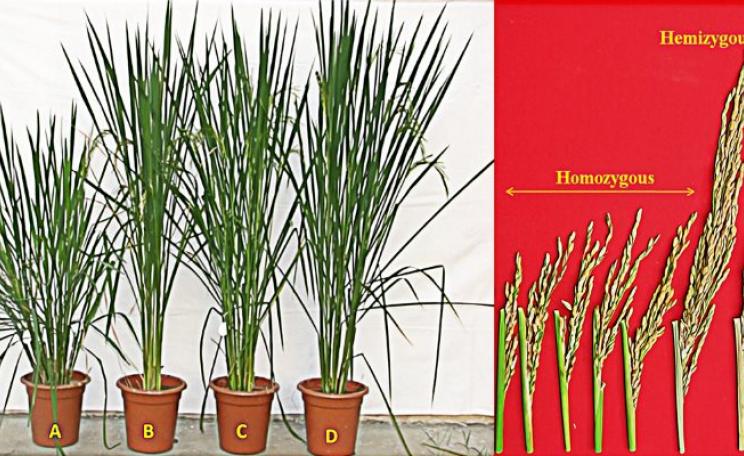The tips of plant leaves, unlike those of the control plants, dried and withered and this damage continued even after the plants were removed from the studied farm.
2011's Fukushima disaster continues to taint the Japanese environment. And now it is rice itself - the dietary staple of Japan and other countries across south and east Asia - that's taking the hit.
A study in the American Genetic Association's Journal of Heredity examines the detailed genetic alterations of the all-important young rice plant when exposed to low-level radiation - that emitted by the Fukushima nuclear plant a year after the disaster.
Previous experiments had provided evidence of "ultralow-level gamma radiation triggering changes at the molecular level in the multi-layered defence / stress-related biological processes in rice leaves".
The Fukushima disaster presented an opportunity to confirm these findings outside the laboratory. This was especially important since the ultralow dose of radiation the researchers desired to study could not feasibly be replicated in a lab setting.
The result? Multiple modes of cellular response were observed, ranging from the triggering of DNA repair mechanisms, to oxidative stress, often culminating in cell death.
Alteration to the East's dietary staple
Working in collaboration with the Society for Radioecology, the researchers took two week old plants and exposed them to the environment with more than 100 times the natural background level. This was on a farm 31 kilometres from the reactor explosions in 2011.
Crucially, there was no direct contact between the studied seedlings and the contaminated soil so as to witness only the effect of radiation still present in the atmosphere. The exposed plants received a dose of radiation eighty to one hundred times greater than background.
The tips of plant leaves, unlike those of the control plants, dried and withered and this damage continued even after the plants were removed from the studied farm.
Over the test period, genetic alteration affected many aspects of gene function including "DNA repair, antioxidant defence, photosynthesis, secondary metabolism and cell death".
The study demonstrated that many different types of genetic material are altered or induced by gamma radiation. Some such alterations are unique to radiation but others are shared with responses made to other stresses, such as weather conditions.
The scientists noted both early and late alteration, for example one protein that was induced strongly at six hours is implicated in cell death. The collected data suggest a multi-faceted effect on the rice's 'self-defence mechanisms'.
The study did not attempt to answer the question of dose-dependency, which is to say the relationship between alteration and radiation dosage, rendering the study more qualitative than quantative.
The repercussions of a lost confidence
The findings possess a special significance, as the report keenly presses, because rice is the essential Asian foodstuff. As the report pithily puts it, "rice is life".
The tips of plant leaves, unlike those of the control plants, dried and withered and this damage continued even after the plants were removed from the studied farm.
That is not to say that Fukushima, or nuclear crises in general, pose an existential threat to Asia's paddy fields - but that rice contamination is an issue of concern to the entire country.
It is this emotive quality to the contamination that has damaged consumers' confidence in the region's rice, and driven farmers to distraction in their efforts to reassure them.
Farmers, desperate to restore their product's image, have looked to strategies as varied and bizarre as applying to their fields powdered scallop shell, liquid potassium and the mineral Zeolite, which can absorb radioactive caesium with mixed results.
The report emerges as Japan resumes the export of rice from the Fukushima area, which began last month (August 2014) having been banned in 2011. Officials have sought to assuage fears of continued contamination through rigorous testing before shipments are sent to market.
Much of the newly exported rice derives from Sukagawa, some 60 kilometres from Fukushima power plant. The study, however, took place at a farm only 31 kilometres away from the crippled nuclear facility.
A strong economic incentive exists to resume a semblance of normality since, prior to the 2011 disaster, Fukushima sent over 100 tonnes of agricultural products abroad. While the export of rice is only now restarting, 2012 saw the resumption of trade in peaches and apples from Fukushima.
Gregory McGann is a writer, journalist and scholar at Exeter College Oxford.





